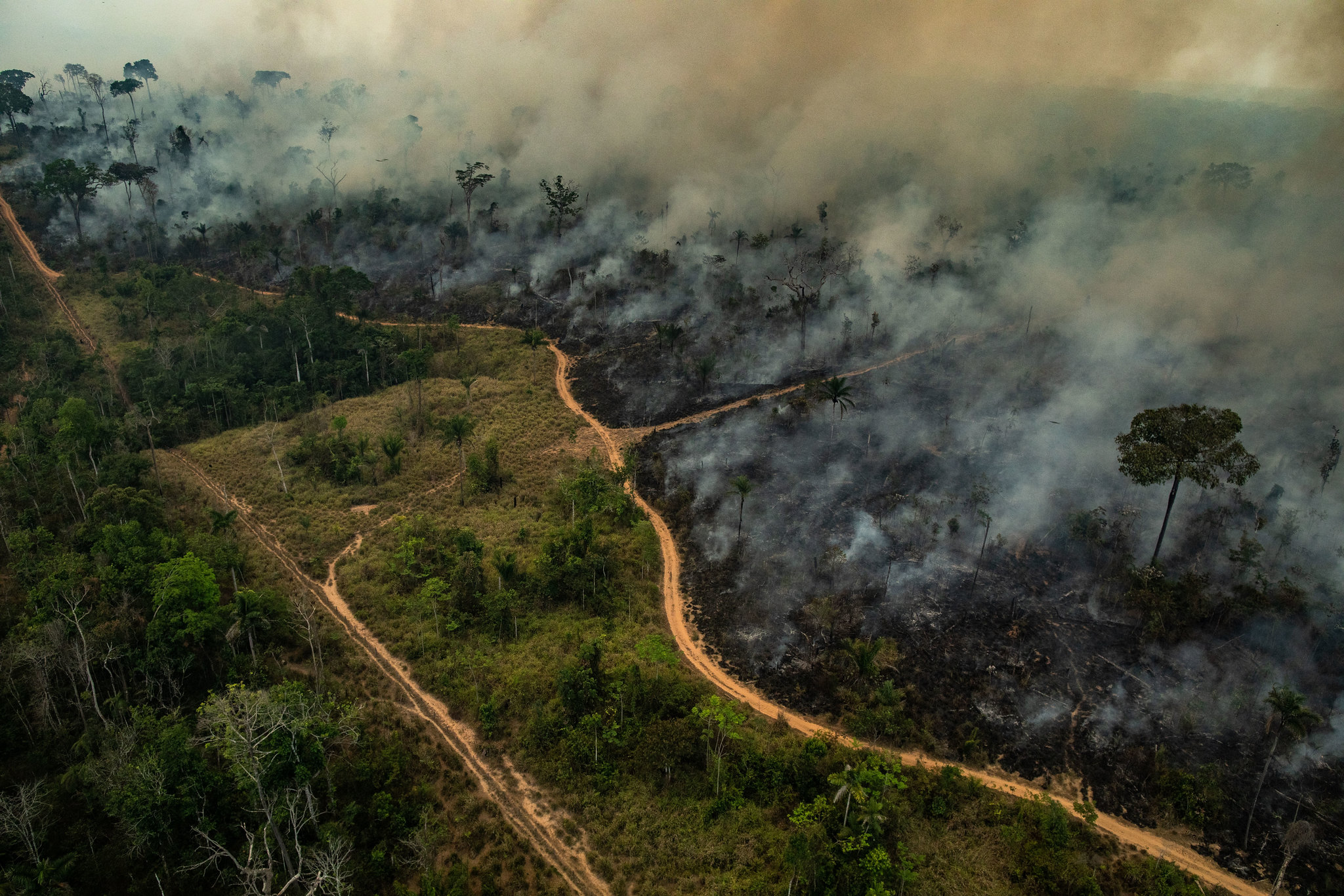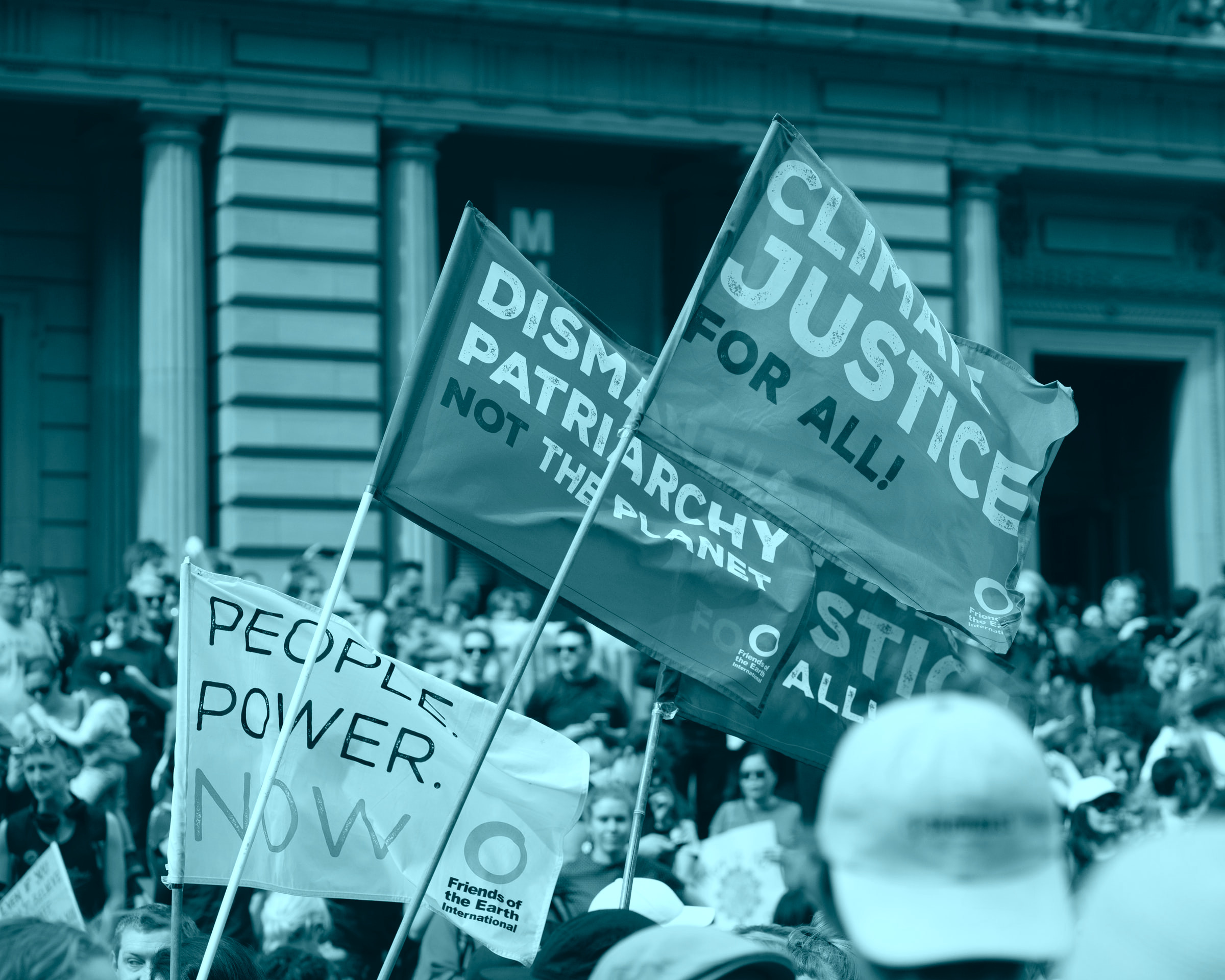The United States of America (US) emerged as a key player in laying the groundwork for the adoption of the Paris Agreement, the first multilateral, legally binding global climate agreement adopted by 196 Parties at the UN Climate Change Conference (COP21) in Paris, on 12 December 2015.
Under the leadership of the Obama administration – whose two terms in office spanned from 2009 to 2017 – the US helped shape international environmental policy and set the groundwork for climate finance, which included initiatives that were introduced to address loss and damage associated with climate change impacts.
However, the election of Donald Trump in 2020, and his presidency from 2017 to 2021, saw the US perform a u-turn on climate policy, withdrawing from the Paris Agreement and reducing its contributions to international climate finance drastically.
Although this tarnished the reputation of the US as a major player in tackling issues related to climate finance, the Biden administration (2021-2025) was able to reverse the trend once again through significant commitments to more ambitious climate action at both the national and international levels.
The changing stances taken by the various administrations demonstrate the significant role played by political acceptability in the decision-making processes by high-income countries regarding the provision of funds for nations tackling loss and damage.
This is also an issue of interest in the context of international climate policies and one that is covered by research institutes such as CMCC in their efforts to investigate climate finance and tools for transitioning to net-zero carbon and resilient economies.
In a recent research report on the political economy of global climate neutrality, CMCC researchers analyze the rules governing loss and damage initiatives, internationally transferable mitigation outcomes, and carbon removals. Realized within ELEVATE, a Horizon Europe project that gathers leading research groups in support of climate policymaking within and outside the EU, the report carries out the first comprehensive evaluation of the feasibility of the latter initiatives from a political economy lens, which entails a focus on a variety of ecological, economic, geophysical, geo-political, institutional, socio-cultural and technological indicators – therefore categorizing political acceptability an institutional indicator.
Specifically to loss and damage initiatives, the research concludes that loss and damage funding benefits from varying levels of political acceptability in donor countries, as some politicians equate support for these initiatives with an admission of liability for climate change-related loss and damage. On the other hand, countries suffering from the adverse impacts of loss and damage tend to lend greater support to efforts that provide remedies for its financial impacts.
When applying this evaluation to the US, which is a high-income country, the rise of the political parties with anti-environmental agendas has gone hand in hand with opposition towards international climate finance.
Environmental policy along party lines
The celebration of the first Earth Day in the US, in 1970, led millions of people to gather in protest against environmental deterioration and, at the same time, led to the birth of the largest environmental movement to date. The actors involved in this movement, together with scientists and policy-makers, came together to lay the foundations for the national system governing the country’s environmental rules.
In this initial phase, pro-environmental positions were not always synonymous with a given political affiliation or leaning. In fact, significant political figures such as Richard Nixon and Gerald Ford, who were both Republicans and held center-right views, enacted some of the nation’s most important environmental legislation with considerable bipartisan support.
However, as the environmental movement continued to grow Republicans with conservative views gradually ceased promoting legislation geared towards environmental protection and, particularly in the wake of the Reagan administration’s staunch anti-environmental position, measures taken to safeguard the environment became increasingly associated with the Democratic Party.
It is against this historical backdrop that President Barack Obama not only spearheaded the US’s adoption of the Paris Agreement in 2016, but also helped coax high-emitting countries such as India and China to sign on as well. A crucial part of this process revolved around Obama’s commitment to increase climate-related funding for developing countries by rich nations, such as the US.
Climate finance: From Obama to Trump
Between 2010 and 2015, the Obama administration allocated 15.6 billion USD in climate finance for adaptation, clean energy, and sustainable landscape activities, which amounted to a fourfold increase in US funding by the end of the first 6 years of the Democratic president’s mandate.
These funds included grants that helped reinforce the adaptation capabilities of recipient states and the implementation of development assistance programs that were geared towards improving the ability of recipient countries to withstand the adverse impacts of climate change and reduce emissions. In addition, they were used to provide technical support for the preparation of nationally determined contributions and national greenhouse gas inventories.
These efforts not only led to investments but also helped develop a workforce that was trained and could build technical capacities to manage data pertaining to weather and climate, as well as land utilization and the use of geospatial methods.
Furthermore, financial assistance was provided to a number of countries for the development of green technologies, such as renewable energy generation, as well as funding for efforts to decrease emissions resulting from forest loss and deterioration.
Even though these activities are not formally labeled as loss and damage finance, in many cases, they contributed to the capacity-building efforts of states that are most vulnerable to climate change.
Following the adoption of the Paris Agreement in 2016, the Obama administration continued providing international climate finance to vulnerable countries by contributing to the Green Climate Fund, which guaranteed an institutional architecture for the flow of loss and damage funds.
However, the USA’s contribution to the fund was short-lived, as the election of Donald Trump in 2017 led ìthe US to ake a step back from the previous administration’s pledges to the Green Climate Fund. Under Trump’s “America First” policy, the US reduced the financial support it provided to vulnerable countries considerably and infamously became the first state party to withdraw from the Paris Agreement.
The Republican president claimed that the financial pledges imposed an unfair burden on the US, distancing the country from the efforts made towards contributing to them. This can be seen as evidence of the tendency of high-income countries to refrain from contributing to international climate finance, a pattern that CMCC researchers Pietro Andreoni, Lara Aleluia Reis, and this author also detected in the aforementioned report “Political economy of global climate neutrality”.
The Biden presidency
In 2020, Trump’s tenure ended following the election of Joe Biden, a Democrat, who ran on a platform that, among other things, pledged ambitious climate action. This paved the way for the introduction of measures aimed at improving environmental outcomes at the national level through the achievement of goals such as the provision of financial incentives for the use of clean energy,and the reduction of greenhouse gas emissions and dangerous pollutant levels.
Following Biden’s election, the nation’s environmental track record also improved at the international level, with the most notable development being the decision to rejoin the Paris Agreement. This helped the US redeem its position as a global leader in the fight against climate change, and allowed it to put pressure on other countries to commit to more ambitious climate action.
Between 2021 and 2022, climate finance provided through US public resources, including banks and multilateral funds, grew by as much as 286%. In doing so, the Biden administration not only took unilateral action for the transfer of such funds but also entered into partnerships with various countries to contribute financially to specific projects with various goals pertaining to energy transition, net zero, and sustainable forestry.
During the last year of his mandate, the Biden administration increased the amount of international climate finance that it provided by six-fold compared to 2021, exceeding the pledges made during the presidential campaign and therefore attracting an unprecedented level of investment from public entities.
What lies ahead?
The Biden administration’s strides towards improving the US’s environmental track record, both domestically and abroad, did not play a key role in the 2023 election cycle and were not sufficient in securing another Democratic term as the Democratic candidate, Kamala Harris, was beaten at the ballots by Trump.
Trump has claimed that he will revert to the hardline anti-environmental legislation approach that shaped his first term in office once his new mandate starts in January 2025. This would also imply a withdrawal from the Paris Agreement, which according to the UN secretary-general may “cripple” this landmark instrument.
What is even more concerning is the suggestion that, during his second term, Trump may also withdraw the US from the UN Framework Convention on Climate Change, the UN process that forms the basis for all multilateral climate change negotiations. This would be even more significant, compared to a potential US withdrawal from the Paris Agreement, as rejoining the UNFCCC would require Senate approval and, therefore, has the potential to remove the US from the system indefinitely. A move that would hinder the US’s ability to take part in inter-state talks to tackle the most pressing challenges posed by climate change.
Although the Biden administration pledged to provide 11 billion USD at COP 29, the prospects for continued US leadership in the realm of climate finance also look bleak, with any chance of closing the climate finance gap – which emerged as a result of the insufficient pledges made during COP29 – looking increasingly unlikely during Trump’s upcoming term in office.
This holds true both for the direct financial pledges that the US federal government can make and the financial contributions it can channel to the Loss and Damage Fund, which was operationalized during COP29 and currently suffers from underfunding. As a result, the role of states and local governments in the US, as well as the private sector in providing funds to assist countries that are vulnerable to climate change will become increasingly important.
The extent of changes in US funding following presidential elections demonstrates the profound role played by political willingness in driving states to contribute to loss and damage financially. This is an issue that requires further attention and more studies, such as the one carried out by CMCC researchers on the feasibility of loss and damage initiatives from a political economy perspective.






